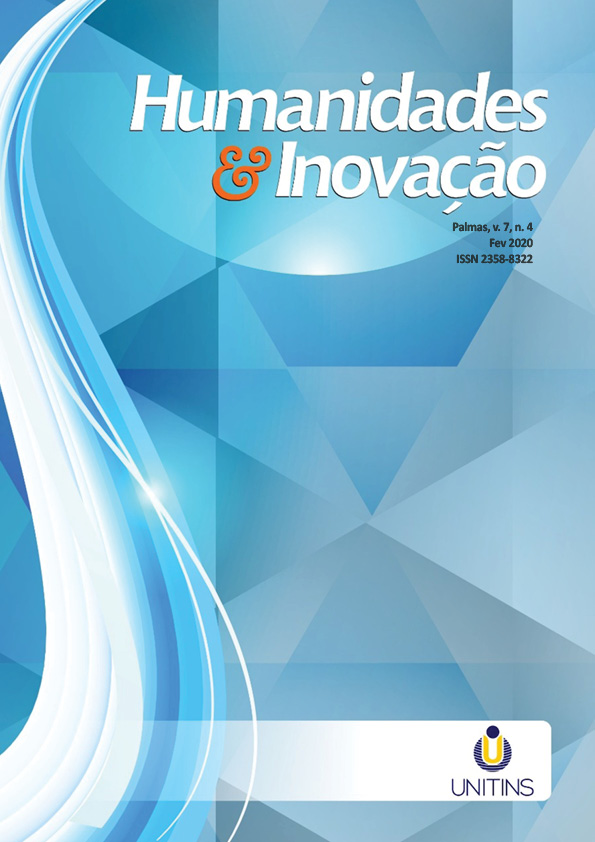MONITORAMENTO TECNOLÓGICO DOS PROCESSOS DE SÍNTESE E USOS DE NANOPARTÍCULAS DE PRATA E PRÓPOLIS COM APLICAÇÃO EM MATERIAIS ODONTOLÓGICOS: UMA REVISÃO PROSPECTIVA DE PATENTES E ARTIGOS CIENTÍFICOS
Abstract
A própolis é uma substância natural produzida pelas abelhas e conhecida por ter atividade antimicrobiana, que é produzida para fechar pequenas lacunas na colmeia, impedindo assim a entrada de insetos e reduzindo a proliferação de fungos e bactérias. Própolis possui atividade antifúngica, antiviral, anticancerígena. Existe muito conhecimento útil sobre própolis em pesquisas nas áreas de medicina, farmacologia, bioquímica e odontologia. Em odontologia, a própolis tem sido utilizada em cariologia, endodontia, dentística, cirurgia e periodontia. O objetivo desse estudo foi realizar uma prospecção tecnológica para avaliar o uso de nanopartículas de prata e própolis na aplicação de materiais odontológicos, na busca de patentes e artigos científicos publicados, nas bases de patentes WIPO, Espacenet, INPI, The Lens, QUESTEL Orbit, e nas bases de artigos científicos Scielo, Pubmed, Periódicos capes, Google acadêmico.
References
A RIGHI, ADNE et al. Brazilian red propolis: unreported substances, antioxidant and antimicrobial activities. Journal of The Science Of Food And Agriculture, [s.l.], v. 91, n. 13, p.2363-2370, 17 maio 2011. Wiley. http://dx.doi.org/10.1002/jsfa.4468.
ADOMAVIčIŋTė, ERIKA et al. Formation and Biopharmaceutical Characterization of Electrospun PVP Mats with Propolis and Silver Nanoparticles for Fast Releasing Wound Dressing. Biomed Research International, [s.l.], v. 2016, p.1-11, 2016. Hindawi Limited. http://dx.doi.org/10.1155/2016/4648287.
ALMEIDA, C. M. de et al. Efficacy of antimicrobial agents incorporated in orthodontic bonding systems: a systematic review and meta-analysis. Journal Of Orthodontics, [s.l.], v. 45, n. 2, p.79-93, 5 mar. 2018. Informa UK Limited. http://dx.doi.org/10.1080/14653125.2018.1443872.
ARIFA MK et al. Recent Advances in Dental Hard Tissue Remineralization: A Review of Literature. Int J Clin Pediatr Dent. 2019;12(2):139–44.
BARBOSA, Valcilaine T. et al. Biogenic synthesis of silver nanoparticles using Brazilian propolis. Biotechnology Progress, [s.l.], p.1-8, 16 ago. 2019. Wiley. http://dx.doi.org/10.1002/btpr.2888.
BATISTA, A. J. S. et al. “Os desafios da nanotecnologia para a vigilância sanitária de medicamentos”. In Ciência & Saúde Coletiva, vol. 19, 2014, num. 7, 2105–2114 pp.
CARVALHO, E.v. et al. Radiopacity and mechanical properties of dental adhesives with strontium hydroxyapatite nanofillers. Journal of the Mechanical Behavior of Biomedical Materials, [s.l.], v. 101, p.103447-102449, jan. 2020. Elsevier BV. http://dx.doi.org/10.1016/j.jmbbm.2019.103447.
DUTRA-CORREA, Maristela et al. Antibacterial effects and cytotoxicity of an adhesive containing low concentration of silver nanoparticles. Journal Of Dentistry, [s.l.], v. 77, p.66-71, out. 2018. Elsevier BV. http://dx.doi.org/10.1016/j.jdent.2018.07.010.
LI, Fang et al. Effect of salivary pellicle on antibacterial activity of novel antibacterial dental adhesives using a dental plaque microcosm biofilm model. Dental Materials, [s.l.], v. 30, n. 2, p.182-191, fev. 2014. Elsevier BV. http://dx.doi.org/10.1016/j.dental.2013.11.004.
LIANG, Kunneng et al. Poly(amido amine) and rechargeable adhesive containing calcium phosphate nanoparticles for long-term dentin remineralization. Journal Of Dentistry, [s.l.], v. 85, p.47-56, jun. 2019. Elsevier BV. http://dx.doi.org/10.1016/j.jdent.2019.04.011.
MEMARPOUR M, Shafiei F,et al . Effect of hydroxyapatite nanoparticles on enamel remineralization and estimation of fissure sealant bond strength to remineralized tooth surfaces: An in vitro study. BMC Oral Health. 2019;19(1):1–13.
NASCIMENTO, Ticiano Gomes do et al. Polymeric Nanoparticles of Brazilian Red Propolis Extract: Preparation, Characterization, Antioxidant and Leishmanicidal Activity. Nanoscale Research Letters, [s.l.], v. 11, n. 1, p.1-11, 17 jun. 2016. Springer Science and Business Media LLC. http://dx.doi.org/10.1186/s11671-016-1517-3.
PEREIRA, Rúben F. et al. Traditional Therapies for Skin Wound Healing. Advances In Wound Care, [s.l.], v. 5, n. 5, p.208-229, maio 2016. Mary Ann Liebert Inc. http://dx.doi.org/10.1089/wound.2013.0506.
PIPPI, B. et al. In vitro evaluation of the acquisition of resistance, antifungal activity and synergism of Brazilian red propolis with antifungal drugs on Candida spp. Journal Of Applied Microbiology, [s.l.], v. 118, n. 4, p.839-850, 4 fev. 2015. Wiley. http://dx.doi.org/10.1111/jam.12746.
Priyadarshini JF. et al. Green Synthesis of Silver Nanoparticles From Propolis. 2018;4(23):23–36.
SFORCIN, José M. Biological Properties and Therapeutic Applications of Propolis. Phytotherapy Research, [s.l.], v. 30, n. 6, p.894-905, 14 mar. 2016. Wiley. http://dx.doi.org/10.1002/ptr.5605.
STYLIANOPOULOS, T. et al. “Design considerations for nanotherapeutics in oncology”, In Nanomedicine: Nanotechnology, Biology, and Medicine, 22 de julho de 2015, 1-55 pp.
TAO, Siying et al. Dentin remineralization via adhesive containing amorphous calcium phosphate nanoparticles in a biofilm-challenged environment. Journal Of Dentistry, [s.l.], p.103193-102197, ago. 2019. Elsevier BV. http://dx.doi.org/10.1016/j.jdent.2019.103193.
THOMAS, Roshmi et al. Biofabricated silver nanoparticles incorporated polymethyl methacrylate as a dental adhesive material with antibacterial and antibiofilm activity against Streptococcus mutans. Biotech, [s.l.], v. 8, n. 9, p.1-8, set. 2018. Springer Science and Business Media LLC. http://dx.doi.org/10.1007/s13205-018-1420-y.
TORRES-MÉNDEZ, Fernando et al. Effects of silver nanoparticles on the bonding of three adhesive systems to fluorotic enamel. Dental Materials Journal, [s.l.], v. 36, n. 3, p.266-274, 2017. Japanese Society for Dental Materials and Devices. http://dx.doi.org/10.4012/dmj.2015-299.
YU, Ollie Yiru et al. Remineralisation of enamel with silver diamine fluoride and sodium fluoride. Dental Materials, [s.l.], v. 34, n. 12, p.1-8, dez. 2018. Elsevier BV. http://dx.doi.org/10.1016/j.dental.2018.10.007.
ZHANG, Ke et al. Dual antibacterial agents of nano-silver and 12-methacryloyloxydodecylpyridinium bromide in dental adhesive to inhibit caries. Journal of Biomedical Materials Research Part B: Applied Biomaterials, [s.l.], v. 101, n. 6, p.929-938, 26 mar. 2013. Wiley. http://dx.doi.org/10.1002/jbm.b.32898.
Copyright Notice
The submission of originals to this periodic implies in transference, by the authors, of the printed and digital copyrights/publishing rights. The copyrights for the published papers belong to the author, and the periodical owns the rights on its first publication. The authors will only be able to use the same results in other publications by a clear indication of this periodical as the one of its original publication. Due to our open access policy, it is allowed the free use of papers in the educational, scientific and non-commercial application, since the source is quoted (please, check the Creative Commons License on the footer area of this page).











